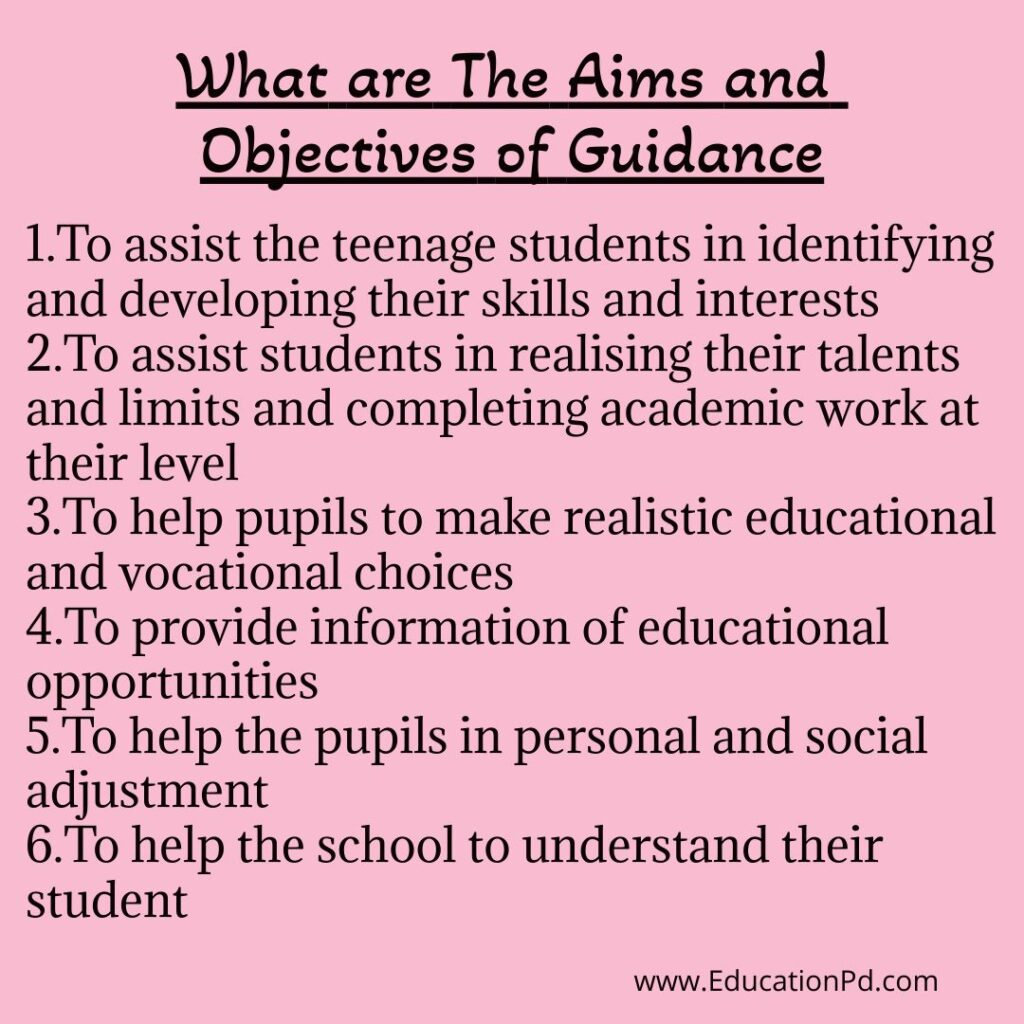Back to: Guidance and Counselling in Education B.ed Notes, M.A Notes, IGNOU Notes
What are The Aims and Objectives of Guidance
The basic goal of guiding is to empower a person to make good decisions on his or her own. This is accomplished by enabling that person to assess his or her talents, capabilities, and potentialities and to take steps to further develop them.
Secondary schools today are expected to carry out more duties in the area of education than they did in the past.
This is true since life has gotten more complicated and demanding. Since teenagers make up the majority of students in secondary and senior secondary schools, education has significantly diversified to fulfil their diverse demands. It is the reason why our nation selected the 10+2+3 educational system. As a result, one of the key roles of guiding at the secondary level is to help adolescents’ strengths and interests be identified and developed.
The following objectives for guidance in the secondary school level were provided by the Indian Education Commission (1966–1966).
- To assist the teenage students in identifying and developing their skills and interests: The time when the youngster goes through a lot of changes is called adolescence. From around 12 years old and younger through the early 20s. He transitions cognitively, emotionally, socially, and physically from infancy to maturity. An individual is capable of having children at this age. He really needs direction at this point.
- To assist students in realising their talents and limits and completing academic work at their level: Teenagers typically overestimate or underestimate their aptitudes. Clarifying their ideas and bringing them up to speed on where they actually stand can help them understand the true state of their personality and other related traits like interests, aptitudes, attitudes, etc.
- To help pupils to make realistic educational and vocational choices: Students should be advised to choose the classes and activities according to their talents, interests, successes, etc. to assist them make realistic educational and career choices. In India, students typically do not consider their skills, talents, and abilities while choosing a course of study. Instead, they follow the advice of their peers or their parents. The parents so frequently direct their children toward careers that they themselves would have preferred but were unable to pursue due to their own difficulties. Failure, annoyance, dropping out, or stagnation result from this. This kind of waste can be significantly reduced if appropriate guiding facilities are made accessible.
- To provide information of educational opportunities: The importance and options for continuing your education should be discussed with the students. They should be informed about the universities, colleges, training programmes, and professional and vocational courses so that they may choose the study programmes that are most suitable for them with the aid of guidance counsellors.
- To help the pupils in personal and social adjustment: The goal of guidance is to empower the individual to make the best options for their adjustment to their environment at home, at school, at college, at work, and in their personal lives. With the aid of advice, he is given this kind of adjusting mechanism.
- To help the school to understand their student:
- The headmasters and instructors must comprehend each student individually in order to plan appropriate educational programmes for the school. If the teachers participate in the guiding exercise, they will be able to comprehend it perfectly. In such scenario, they can figure out how to study their pupils in a more effective manner. This enhances the instruction given in the classroom.
Jones has also defined his goals and stated that the best growth in the proper direction and the capacity to make successful adjustments in life are the goals and objectives of guiding. His other objectives are very similar to those that were previously stated.
